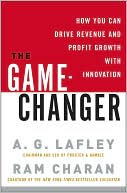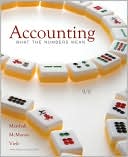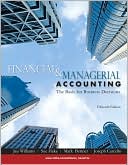The Economics of Self-Employment and Entrepreneurship
This book will serve as an essential reference guide to researchers, students and teachers of entrepreneurship in economics, business and management and other related disciplines.
Search in google:
Provides a timely and comprehensive overview of self-employment and entrepreneurship in our modern economy.
\ Cambridge University Press\ 0521828139 - The Economics of Self-Employment and Entrepreneurship - Simon C. Parker\ Excerpt\ \ \ Introduction\ \ \ \ \ The entrepreneur is at the same time one of the most intriguing and one of the most elusive characters . . . in economic analysis. He has long been recognised as the apex of the hierarchy that determines the behaviour of the firm and thereby bears a heavy responsibility for the vitality of the free enterprise society. (Baumol, 1968, p. 64)\ Self-employment is unquestionably the oldest way by which individuals offer and sell their labour in a market economy. At an earlier time, it was also the primary way. Despite this history, its principal features and the characteristics that differentiate self-employment from wage and salary employment have attracted the attention of only a handful of students of the labour market. (Aronson, 1991, p.ix)\ Entrepreneurship is increasingly in the news. Governments all over the world extol its benefits and implement policies designed to promote it. There are several reasons for this interest in, and enthusiasm for, entrepreneurship. Owner-managers of small enterprises run the majority of businesses in most countries. These enterprises are credited with providing specialised goods and services that are ignored by the largest firms. They also intensify competition, thereby increasing economic efficiency. Some entrepreneurs pioneer new markets for innovative products, creating new jobs and enhancing economic growth. In a few cases, today's small owner-managed enterprises grow to become tomorrow's industrial giants. Even those that do not may create positive externalities, like the development of supply chains that help attract inward investment, or greater social inclusion. It is sometimes also claimed that the decentralisation of economic production into a large number of small firms is good for society and democracy, as is the fostering of a self-reliant and hardy 'entrepreneurial spirit'.\ Entrepreneurship has only recently come to be regarded as a subject. A complete view of it recognises its multidisciplinary academic underpinnings, drawing as it does from Economics, Finance, Business and Management, Sociology, Psychology, Economic Geography, Economic History, Law, Politics and Anthropology. This heterogeneous provenance reflects the multidimensional nature of entrepreneurship, which partly contributes to the elusiveness of the entrepreneur alluded to by William Baumol.\ \ 1.1 Aims, motivation and scope of the book\ There is general agreement that entrepreneurship is sadly neglected in most economics textbooks (see, e.g. Rosen, 1997; Kent and Rushing, 1999). Some commentators have attributed this neglect to an inherent unsuitability of economics for studying entrepreneurship. These commentators allege that economics is concerned only with equilibrium outcomes in competitive markets with perfectly informed agents, whereas entrepreneurship embodies imperfect information and unexpected innovations that disrupt equilibria (Barreto, 1989; Kirchhoff, 1991; Harper, 1996; Rosen, 1997). While it is true that economists usually take the state of technology as given, this point should not be pushed too far. For a start, there is much more to entrepreneurship than just innovation. This book makes the case that the tools of modern economics are invaluable for understanding the determinants of, and constraints on, entrepreneurship, the behaviour of entrepreneurs, the contribution of entrepreneurs to the broader economy and the impact of government policies on entrepreneurship. It is hoped that the book will go some way towards correcting mistaken and prejudiced impressions about the contribution of economics to this field, and will convince the reader that it is not an oxymoron to talk about the 'economics of entrepreneurship'.\ One aspect of entrepreneurship that economists have researched quite thoroughly is occupational choice. Despite the limitations of employing such a narrow definition — an issue we shall discuss further below — many applied labour economists have equated self-employment with entrepreneurship, and have analysed behavioural choice between paid- and self-employment. Unfortunately, here too the economics textbooks have been guilty of neglect: the above quotation from Richard Aronson about self-employment remains as true today as it did over a decade ago. To appreciate the economic importance of self-employment, consider the following facts:\ \ \ 1.\ Around 10 per cent of the workforces in most OECD economies are self-employed. The figure climbs to about 20 per cent when individuals who work for the self-employed are also included (Haber, Lamas and Lichtenstein, 1987). Two-thirds of people in the US labour force have some linkage to self-employment, by having experienced self-employment, by coming from a background in which the household head was self-employed, or by having a close friend who is self-employed (Steinmetz and Wright, 1989). And by the end of their working lives, about two-fifths of the American workforce will have had at least one spell of self-employment (Reynolds and White, 1997).\ \ \ 2.\ Between 80 and 90 per cent of businesses are operated by self-employed individuals (Acs, Audretsch and Evans, 1994; Selden, 1999).\ \ \ 3.\ Many employees in industrialised countries claim that they would like to be self-employed. For example, according to Blanchflower (2000), 63 per cent of Americans, 48 per cent of Britons and 49 percent of Germans stated a preference for self-employment over paid-employment.1\ \ \ Why have the economics textbooks so conspicuously neglected self-employment and entrepreneurship? The answer is unclear, but might involve a lingering mistrust of entrepreneurship among economists, and an inability to pigeon-hole this multifaceted subject. There is certainly no lack of research on self-employment and entrepreneurship by economists. Indeed, we hope that one of the contributions of this book is to organise and assess the current state of this branching, acquisitive and rapidly growing literature. The book is intended to serve as a comprehensive overview and guide to researchers and students of entrepreneurship in a variety of disciplines, not just in Economics. The book can also be used to support teaching in modules such as Small Business Economics and Entrepreneurship. Readers with a working knowledge of basic undergraduate calculus, statistics and economics should cope easily with the book's modest technical demands. Readers without this technical background will still be able to read the majority of the book without difficulty, and understand the gist of the remainder by 'reading between the Greek'.\ For brevity and focus, some topics will be excluded. These include entrepreneurship in education; 'social entrepreneurship' and 'intrapreneurship';2 organisational, strategic and managerial decision making by entrepreneurs; network and organisational ecology approaches to entrepreneurship; 'evolutionary economics'; and practical advice (including 'how to' information) to entrepreneurs. Nor will we provide descriptive case studies either of individual entrepreneurs, or of small firms or the industries in which they operate. These topics are ably covered in numerous texts in the Business/Management literature, and will not be repeated here.\ \ \ \ 1.2 Structure of the book\ \ The remainder of this chapter is organised as follows. Section 1.3 discusses issues in the definition and measurement of entrepreneurship and self-employment. The distinction between these two concepts explains their joint presence in the title of this book. Sections 1.4 and 1.5 introduce the reader to some stylised facts about the self-employed, including their number, incomes and income inequality. Section 1.6 describes some useful econometric models of occupational choice referred to extensively in the book.\ Part I deals with theories of entrepreneurship and the characteristics of entrepreneurs. Chapter 2 outlines economic theories of the entrepreneur and entrepreneurship, both 'early' (Section 2.1) and 'modern' (Section 2.2). The former tend to paint a broad-brush picture of entrepreneurship, whereas the latter apply the tools of microeconomics to the problem of entrepreneurship as an occupational choice. Chapter 3 fills out some detail by considering the roles of pecuniary factors, individual characteristics, family background and environmental variables for explaining the decision to become an entrepreneur. Chapter 4 considers separately issues of race, gender and immigration as they relate to entrepreneurship.\ Part II treats the important problem of raising finance for entrepreneurial ventures. Chapter 5 analyses the economic issues arising from bank finance of new start-ups, bank loans being the largest and most frequently used source of outside funds by entrepreneurs. Although we will touch on such 'practical' issues as collateral and bank—borrower relationships, the focus of this chapter will be on the market failures that can arise as a consequence of asymmetric information, including credit rationing, under-investment and over-investment. These issues carry important policy implications about whether governments should encourage or discourage entrepreneurship. Chapter 6 considers other sources of funds, including equity finance, trade credit, group lending schemes and borrowing from family and friends. Chapter 7 summarises evidence on whether, and to what extent, entrepreneurs face credit rationing.\ Part III investigates what happens to new ventures after they are launched. Chapter 8 discusses theory and evidence about job creation by entrepreneurs, and their labour supply and retirement behaviour. Chapter 9 analyses the growth, innovation and exit behaviour of new ventures and small firms. With all of this apparatus in place, it is possible to explore systematically the scope for governments to intervene in the market to promote entrepreneurship. This is the subject of part IV (chapter 10). Government policies can take several forms, including credit market interventions, taxation and direct assistance and regulation. Chapter 11 concludes, and draws together some suggestions for future research where our understanding of particular issues is especially incomplete.\ \ \ \ 1.3 Definition and measurement issues\ \ The problem of defining the word 'entrepreneur' and establishing the boundaries of the field of entrepreneurship still has not been solved. (Bruyat and Julien, 2001, p. 166)\ Our first and most pressing task is to define entrepreneurs and entrepreneurship. Unfortunately, this happens to be one of the most difficult and intractable tasks faced by researchers working in the field. There is a proliferation of theories, definitions and taxonomies of entrepreneurship which often conflict and overlap, resulting in confusion and disagreement among researchers and practitioners about precisely what entrepreneurship is (see Parker, 2002a). For example, consider the following illustrative and abbreviated set of viewpoints. In applied work, labour economists often equate entrepreneurs with the self-employed, on the grounds that the self-employed fulfil the entrepreneurial function of being risk-bearing residual claimants. However, others think this definition is too broad, claiming that only business owners who co-ordinate factors of production (in particular, those who employ workers) are really entrepreneurs. Still others think that the economist's definition is too narrow, because it excludes entrepreneurship in the corporate and social spheres. Then there are those steeped in the Schumpeterian tradition who argue that entrepreneurship is identified primarily with the introduction of new paradigm-shifting innovations. Others again have emphasised psychological traits and attitudes supposedly peculiar to entrepreneurship. And so the list goes on.\ It is easier to define the terms 'self-employed' and 'self-employment', though even here there are measurement problems and disagreements, which we discuss below. Given the widespread availability of data on the self-employed in government and private surveys world wide, it is also an easier entity to operationalise in empirical research (Katz, 1990). To cut through a paralysing and ultimately fruitless debate, and to achieve consistency, we will adopt the following convention in this book. At the conceptual level, the terms 'entrepreneur' and 'entrepreneurship' will be used; at the practical level, where issues of measurement, estimation and policy are involved, we will use the closest approximation to the manifestation of entrepreneurship that appears to be suitable. That will usually be 'self-employment', though occasionally the term 'small firm' will be more relevant. Note that the problems of defining 'small' firms are also non-trivial. Firm-size definitions are arbitrary and industry-specific, and are not obviously congruent with entrepreneurship. Not all entrepreneurs run small firms, and not every small firm is run by an entrepreneur (Brock and Evans, 1986; Holtz-Eakin, 2000).\ The self-employed are often taken to be individuals who earn no wage or salary but who derive their income by exercising their profession or business on their own account and at their own risk. Likewise, partners of an unincorporated business are usually classified as self-employed. It is sometimes helpful to partition the self-employed into employers and own-account workers (the latter of which work alone), or into owners of incorporated or unincorporated businesses. In most countries, incorporation of a business renders it susceptible to company law, which requires the owner to publicise stipulated data about the business. In the UK and USA, for example, these include audited accounts if business turnover exceeds a specified level. Despite the costs and inconvenience involved, there are several advantages to incorporation. They include: protection from creditors via limited liability; favourable pension contribution rules; greater credibility with customers (Storey, 1994b); and payment of corporation tax on company profits, which at high owner incomes may be substantially lower than personal income tax rates (Fuest, Huber and Nielsen, 2002). Incorporated business owners can either receive an employee salary as a director of their company, or they can pay themselves dividends - so escaping payroll taxes in some jurisdictions, including the UK. Most self-employed people in most countries own unincorporated businesses,3 which renders their incomes liable to personal income tax.\ The first definitional problem is that in many countries (including the UK and USA), owners of incorporated businesses are defined as employees rather than self-employed. This is despite them resembling in all other respects (e.g. residual claimant status) the 'self-employed'. This is sometimes an important distinction in applied self-employment research.\ Second, for some individuals, the legal and tax-based definitions of self-employment are at variance with each other. In law, the issue comes down to whether there is a contract of service or a contract for services. The first indicates paid-employment, the second self-employment.4 In contrast, different criteria are often used for determining who is self-employed for the purposes of income taxation and social security eligibility. There is no shortage of examples where the legal and tax definitions fail to coincide (Harvey, 1995; Dennis, 1996).\ Third, in many government surveys used in empirical research, self-employment status is self-assessed by the survey respondents. This can lead to further differences in the classification of workers, compared with legal and tax-based definitions (Casey and Creigh, 1988; Boden and Nucci, 1997). Partly for this reason, some surveys (e.g. the UK Labour Force Survey (LFS) and the US Characteristics of Business Owners (CBO)) use tax-based definitions of self-employment.\ Fourth, there appears to be a 'grey area' between paid-employment and self-employment. Some workers classified as self-employed with apparent autonomy over their work hours are effectively employees, being 'peripheral' workers subordinated to the demands of one client firm (Pollert, 1988; Harvey, 1995). For example, Harvey (1995) contends that, in the construction industry, most self-employed workers are to all intents and purposes direct employees, working exclusively for one contractor, and providing independently only their labour.5 Employers provide the materials, capital and plant and set the terms of work and pay. This is a potential matter of concern to policy makers to the extent that self-employed workers are engaged on worse terms than employees, lacking job security, entitlement to holidays, sick pay, employment protection, or trades union rights. It is sometimes argued that employers actively seek to organise their workforce in self-employment contracts, to cut costs and to avoid their social obligations.6\ This debate is related to one on contracting-out of labour by large firms, a phenomenon that was thought to have been particularly pronounced in the 1980s, a decade when self-employment rates in several countries increased dramatically. Hakim (1988) pointed to some evidence that UK firms made some limited moves during the 1980s to outsource work to self-employed contractors. However, according to Blackburn (1992) subcontracting has always existed and the increase in the UK in the 1980s was relatively slight. Also, case study evidence from Leighton (1982) suggested that many employers prefer hiring employees to self-employed contractors even in industries where self-employment is relatively common. Benefits of hiring employees directly include greater control, discipline and stability. If this argument is valid, it suggests that the amount of 'grey' self-employment in the form of outsourced labour has not grown dramatically in the recent past, and is presumably likely to remain stable in the near future.\ Other examples of workers in the 'grey area' between employment and self-employment include commission salespersons, freelancers, home-workers and tele-workers,7 workers contracted through temporary employment agencies and franchise holders. Regarding the latter, it is often difficult to determine whether a franchise is an independent small business or part of a large firm. Felstead (1992) argued that many 'self-employed' franchisees are effectively directed by their franchisor, who holds most of the ownership rights and has a senior claim on profits. With relatively little discretion about the format of their business, one could certainly claim that some franchisees resemble branch managers more than independent entrepreneurs. On the other hand, one could argue that a self-employed retailer who is pressurised into stocking the goods of mainly one goods manufacturer also has limited discretion about the nature of his or her business. And like other self-employed workers, franchisees face uncertainty. In their case, not only is their income uncertain, but there is also a possibility that the franchisor will either go out of business, or refuse to renew the franchise agreement at the expiration of its term.8\ Two other 'grey' categories include unpaid family workers who work in a business run by a self-employed person; and members of worker co-operatives, who are not obviously either employees or self-employed workers in the conventional sense of the term. Both groups tend to be more numerous in developing than in developed countries, and in rural than in urban areas. According to Bregger (1996, p. 5), 'Unpaid family workers are persons who work on a family farm or in a family business for at least 15 hours a week and who receive no earnings or share of the profits of the enterprise'. Blanchflower (2000) detected substantial variation within developed countries in the proportion of self-employed workers who are unpaid family workers, being as high as 33 per cent in Japan, compared with 14 per cent in Italy and just 1.7 per cent in the USA. As Blanchflower points out, it may not make sense just to discard unpaid family workers from the self-employment count, since they often share indirectly (e.g. via consuming household goods) the proceeds generated by the business. Worker co-operatives are also relatively uncommon in the UK, and tend to be larger and better established in European countries, such as France, Italy and Spain (Spear, 1992).\ Section 1.4 documents some international evidence on levels of, and trends in, aggregate self-employment rates. At the aggregate level, it is likely that alternative measures of self-employment are highly correlated with each other, allowing trends within a given country to be identified fairly reliably (Blau, 1987). However, to the extent that different countries use different definitions of self-employment, cross-country comparisons of levels have to be treated with caution.\ \ \ \ 1.4 International evidence on self-employment rates and trends\ There is great diversity in the level and time-series pattern of self-employment rates across countries. This is evident from tables 1.1, 1.2 and 1.3, which summarise data for a selection of OECD countries, Eastern European transition economies and developing countries, respectively.9\ Two additional features of these tables stand out. One is that self-employment rates are higher on average in developing than developed countries. A second is that the treatment of agricultural workers makes\ Table 1.1 Aggregate self-employment rates in some selected OECD countries, 1960-2000a (per cent)\ \ \ \ \ \ \ \ \ \ 1960\ 1970\ 1980\ 1990\ 2000\ \ \ \ \ \ \ \ \ A All workers\ \ \ USA\ 13.83\ 8.94\ 8.70\ 8.50\ 7.33\ \ \ Canadab\ 18.81\ 13.20\ 9.74\ 9.52\ 10.66\ \ \ Japan\ 22.68\ 19.18\ 17.18\ 14.05\ 11.34\ \ \ Mexico\ 34.25\ 31.29\ 21.67\ 25.64\ 28.53\ \ \ Australia\ 15.86c\ 14.09\ 16.16\ 15.05\ 13.49\ \ \ Franceb\ 30.51\ 22.17\ 16.79\ 13.26\ 10.56\ \ \ Italy\ 25.93\ 23.59\ 23.26\ 24.53\ 24.48\ \ \ Netherlandsb\ 21.87\ 16.65\ 12.23\ 9.64\ 10.46d\ \ \ Norway\ 21.79\ 17.90\ 10.03\ 9.24\ 7.03\ \ \ Spainb\ 38.97\ 35.59\ 30.47\ 26.27\ 20.49\ \ \ UK\ 7.28\ 7.36\ 8.05\ 13.32\ 11.34\ \ \ B Non-agricultural workers\ \ \ \ \ \ \ \ USA\ 10.45\ 6.94\ 7.26\ 7.51\ 6.55\ \ \ Canadab\ 10.17\ 8.33\ 7.05\ 7.40\ 9.46\ \ \ Japan\ 17.38\ 14.44\ 13.75\ 11.50\ 9.35\ \ \ Mexico\ 23.01\ 25.20\ 14.33\ 19.89\ 25.48\ \ \ Australia\ 11.01c\ 10.00\ 12.73\ 12.34\ 11.72\ \ \ Franceb\ 16.90\ 12.71\ 10.71\ 9.32\ 8.06\ \ \ Italy\ 20.60\ 18.97\ 19.20\ 22.24\ 23.21\ \ \ Netherlandsb\ 15.08\ 12.02\ 9.06\ 7.84\ 9.25d\ \ \ Norway\ 10.14\ 8.61\ 6.53\ 6.12\ 4.83\ \ \ Spainb\ 23.60\ 21.55\ 20.63\ 20.69\ 17.69\ \ \ UK\ 5.89\ 6.27\ 7.11\ 12.41\ 10.83\ \ \ \ \ \ \ \ \ Notes: a Self-employment rates defined as employers plus persons working on their own account, as a proportion of the total workforce.\ bIncludes unpaid family workers c 1964 not 1960 d 1999 not 2000.\ Source: OECD Labour Force Statistics, issues 1980-2000, 1970-81 and 1960-71.\ \ a substantial difference to measured self-employment rates in most (but not all) countries.\ \ \ 1.4.1 The OECD countries\ Consider the USA first. According to table 1.1,10 if agricultural workers are included, the US self-employment rate has been in continual decline since at least 1960. According to Steinmetz and Wright (1989), this decline can actually be traced back to the 1870s, when the self-employment rate stood at just over 40 per cent of the labour force, and it underwent an especially steep decline between 1950 and 1970 (see also table 1.1).11\ Table 1.2 Aggregate self-employment rates in some selected transition economies, 1980-1998/1999a (per cent)\ \ \ \ \ \ \ \ \ \ 1980\ 1990\ 1992\ 1994\ 1998/99b\ \ \ \ \ \ \ \ \ Poland (all workers)\ 25.44\ 27.17\ \ \ 22.44\ \ \ (non-agricultural)\ 3.37\ 9.16\ \ \ 11.70\ \ \ Russian Federation\ \ \ 0.76\ \ 5.29\ \ \ Czech Rep. (all workers)\ \ \ \ 10.18\ 14.59\ \ \ (non-agricultural)\ \ \ \ 10.25\ 14.50\ \ \ Hungary (all workers)\ \ \ \ 16.93\ 14.56\ \ \ (non-agricultural)\ \ \ \ 16.94\ 12.81\ \ \ Slovak Rep. (all workers)\ \ \ \ 6.21\ 7.80\ \ \ (non-agricultural)\ \ \ \ 6.49\ 8.00\ \ \ \ \ \ \ \ \ Notes: a Self-employment rates defined as employers plus persons working on their own account, as a proportion of the total workforce.\ b'1998/99' is 1998 for Poland and 1999 for the Russian Federation.\ Source: UN Yearbook of Labour Statistics, various issues.\ Table 1.3 Aggregate self-employment rates in developing countries, 1960s-1990sa (per cent)\ \ \ \ \ \ \ \ \ \ 1960sb\ 1970sb\ 1980sb\ 1990sb\ \ \ \ \ \ \ \ \ Africa\ \ \ Mauritius\ 13.03\ 10.30\ n.a.\ 16.72\ \ \ Egypt\ 29.19\ 26.14\ 28.20\ 27.19\ \ \ Americas\ \ \ Bolivia\ n.a.\ 48.86\ 40.27\ 34.81\ \ \ Costa Rica\ 20.78\ 17.10\ 21.80\ 24.70\ \ \ Dominican Rep.\ 44.79\ 29.44\ 36.46\ 37.11\ \ \ Ecuador\ 42.97\ 37.81\ 37.27\ 37.03\ \ \ Asia\ \ \ Bangladesh\ 7.33\ 45.56\ 38.83\ 29.59\ \ \ Korean Rep.\ 44.04\ 33.92\ 33.07\ 28.02\ \ \ Pakistan\ 21.94\ 46.90\ 55.95\ 48.18\ \ \ Sri Lanka\ 26.94\ 22.90\ 24.74\ 26.68\ \ \ Thailand\ 29.83\ 29.65\ 29.75\ 28.45\ \ \ \ \ \ \ \ \ Notes: aSelf-employment rates defined as employers plus persons working on their own account, as a proportion of the total workforce. Includes agricultural workers.\ b'1960s' is either 1960, 1961, 1962 or 1963 for all countries; '1970s' is some year between 1970 and 1976; '1980s' is 1980 or 1981 except Ecuador (1982), Costa Rica (1984) and Bolivia (1989); '1990s' is some year between 1990 and 1996.\ Source: UN Yearbook of Labour Statistics, various issues.\ However, if agricultural workers are excluded, table 1.1 shows that a revival in US self-employment occurred during the 1970s and 1980s, a finding that has also been observed by some other authors.12 But unlike these other authors, table 1.1 reveals that this revival in non-agricultural US self-employment has apparently come to an end: by 2000 the non-agricultural self-employment rate had fallen back to below its 1970 level.\ \ \ \ \ \ © Cambridge University Press
List of FiguresList of TablesPrefaceGlossary of commonly used symbols1Introduction1IEntrepreneurship: theories, characteristic and evidence372Theories of entrepreneurship393Characteristics of entrepreneurs and the environment for entrepreneurship684Ethic minority and female entrepreneurship113IIFinancing entrepreneurial ventures1355Debt finance for entrepreneurial ventures1376Other sources of finance1657Evidence of credit rationing179IIIRunning and terminating an enterprise1918Labour demand and supply1939Growth, innovation and exit208IVGovernment policy23310Government policy: issues and evidence23511Conclusions266References272Author index308Subject index308








